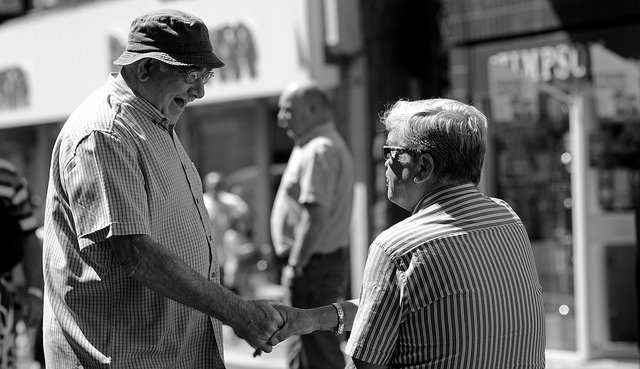Consolidating the future of the NHS
Consolidating the future of the NHS
The NHS England planning guidance was published at the end of March, and the key word in the document is…

Imagine the following situation; you are 86 years old, you live alone, you have little or no contact with your family and friends and as a result you have become reclusive. This isn’t a minority case, this is the increasing norm for many older people. Only 50 years ago we would have been appalled at thought of not knowing our neighbours, nowadays interacting with them often amounts to a knowing nod or an occasional good morning.
For older people living in isolation befriending services can be fantastic; however the reality is there are not the resources available for these services to pop up universally or be run for everyone who needs them. Add to that, many of those who would benefit most from this service likely live alone and therefore be less likely to be aware of these services, or worse possibly refuse to use them through fear or suspicion.
In response we need to become more innovative and think about our resources differently. My suggestion, and the point of this post, is to suggest that we should use council housing repairs services in a more creative way. With consistent face to face contact, it is remarkable how much insight a member of the housing repairs team could have into how a person may be coping. For some elderly people, a member of the housing repairs team may be the only person they come in to contact with during the week.
Take for example Derby City Council’s Healthy Housing Hub; a primarily preventative service working across private and public sector that goes into houses with the aim of scouting for potential hazards to that person’s health, security and wellbeing such as cold and damp conditions, or trip hazards. In the case of private sector properties they typically deal with the issue direct; for public sector properties they work with the housing repairs service.
“If it wasn’t for your help…I would be dead by now”
“I live alone…been ill…and had to remain cold”
“It’s given me my independence back”
Direct quotes from the customer further emphasise how appreciated this service has been.
The Derby example shows how a ‘drop in-look up’ service can have a real impact (a local authority could make an annual saving of approx. £30,000 for every person that avoids residential or nursing care). Derby’s Healthy Housing Hub is an innovative model with a strong ‘invest to save’ rationale. For vulnerable people living in the private sector it would appear to be a unique and crucial service; likewise for the public sector, but here it’s still a separate service that runs parallel to the housing repairs team. My question is simple; can we find a way to get public sector housing repairs teams to observe the wellbeing of the person alongside the wellbeing of the property?
image via photopin